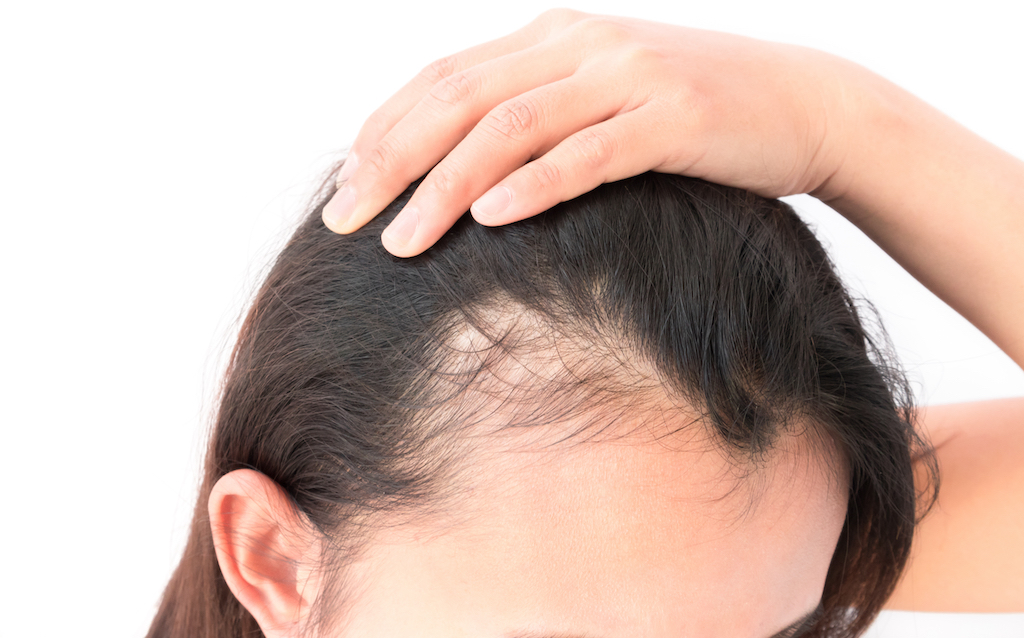Shamila Gupta Rawal, MD, a board-certified otolaryngologist/head and neck surgeon, specializes in the management of hair loss and rejuvenation of the face and neck at The Rawal Institute for Hair Restoration and Aesthetic Medicine. Dr. Rawal is the only hair restoration surgeon providing comprehensive surgical and non-surgical treatment for all types of hair loss in Madison, Wisconsin, with an expansive patient base that travels from coast to coast. Haute Beauty sits down with Dr. Shamila Rawal to discuss how traction alopecia is caused and offers suitable treatment options.
 Photo Credit: Shutterstock1. What is traction alopecia?
Photo Credit: Shutterstock1. What is traction alopecia?
Traction alopecia is hair loss caused by recurrent trauma to the hair follicles by way of pulling the hair into tight ponytails or braids. It affects only the sections of hair that have been pulled. An early sign of traction alopecia may present itself as little bumps on the scalp that resemble pimples. Other symptoms include redness of the scalp; soreness, stinging, or itching; scaling of the scalp; and the inflammation of hair follicles (folliculitis). As the alopecia progresses, missing and broken hair will start to show. If detected at an early stage, this type of hair loss is reversible, and the hairs typically regrow. The demographic that is most susceptible to this type of alopecia is African American individuals, specifically women, with tight hairstyles. However, anyone can be affected by traction alopecia, and the risk increases with age.
2. What are some treatment options?
Dr. Rawal examines the scalp with a microscope to assess the health of existing follicles and overall scalp condition. Common medical treatment options may include antibiotics, topical steroids, antifungal shampoos, biotin supplements, and/or minoxidil (Rogaine). These treatments are targeted toward reducing inflammation around and repairing follicles that are salvageable, while regenerative modalities, such as PRP (platelet-rich plasma) and LLLT (low-level laser light therapy), are used to repair the underlying scalp. In areas where follicles have been permanently lost, a hair transplant is performed to repopulate the scalp and allow for restoration of density. Supplemental modalities offered by Dr. Rawal include topical growth serums, stress adaptogens, and others, prescribed as needed to optimize the hair growing environment.
View this post on Instagram
3. How does PRP work in traction alopecia?
PRP, or platelet-rich plasma, is a regenerative medicine technology using the body’s own growth factors and can be an effective treatment for traction alopecia in its earlier stages. There is a direct impact of healing of damaged hair follicles, and there is also an indirect benefit secondary to repair and healing of follicular support structures, such as collagen and blood vessels. PRP cannot generate new follicles in areas that have lost their follicles completely; however, when used in conjunction with hair transplant in these areas, can work synergistically to promote optimal and faster growth of the transplanted follicles. Because the cells are taken from one’s own body, issues like infection and rejection are almost nonexistent, making the technology very safe and very effective where indicated.
4. When is a hair transplant needed for traction alopecia?
Hair transplant is needed when traction alopecia causes permanent follicular loss. Dr. Rawal performs both follicular unit transplantation (FUT) and follicular unit extraction (FUE) to treat traction alopecia. It is very important that hair transplant only be performed on a healthy scalp, to maximize the “take” of the transplant; therefore, Dr. Rawal often pre-treats the weakened, damaged scalp with several rounds of PRP and LLLT before performing the transplant.
For more information, visit Dr. Brian A. Levine's social media:

























